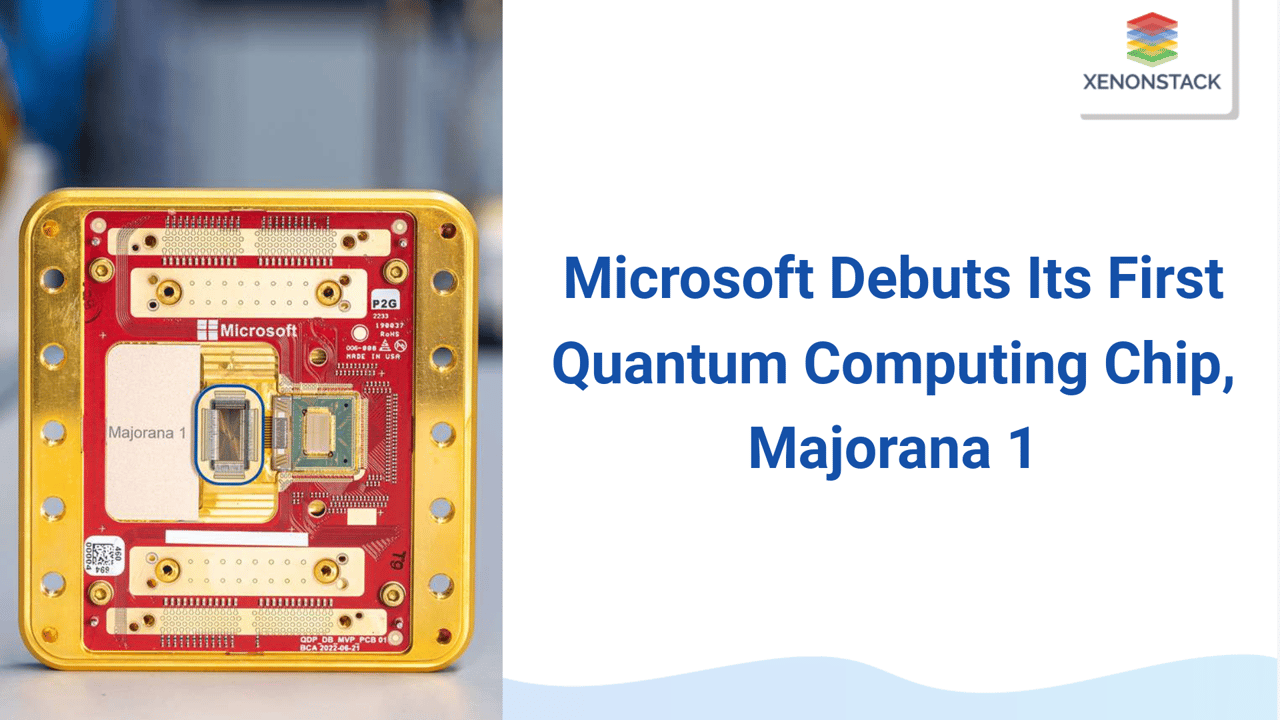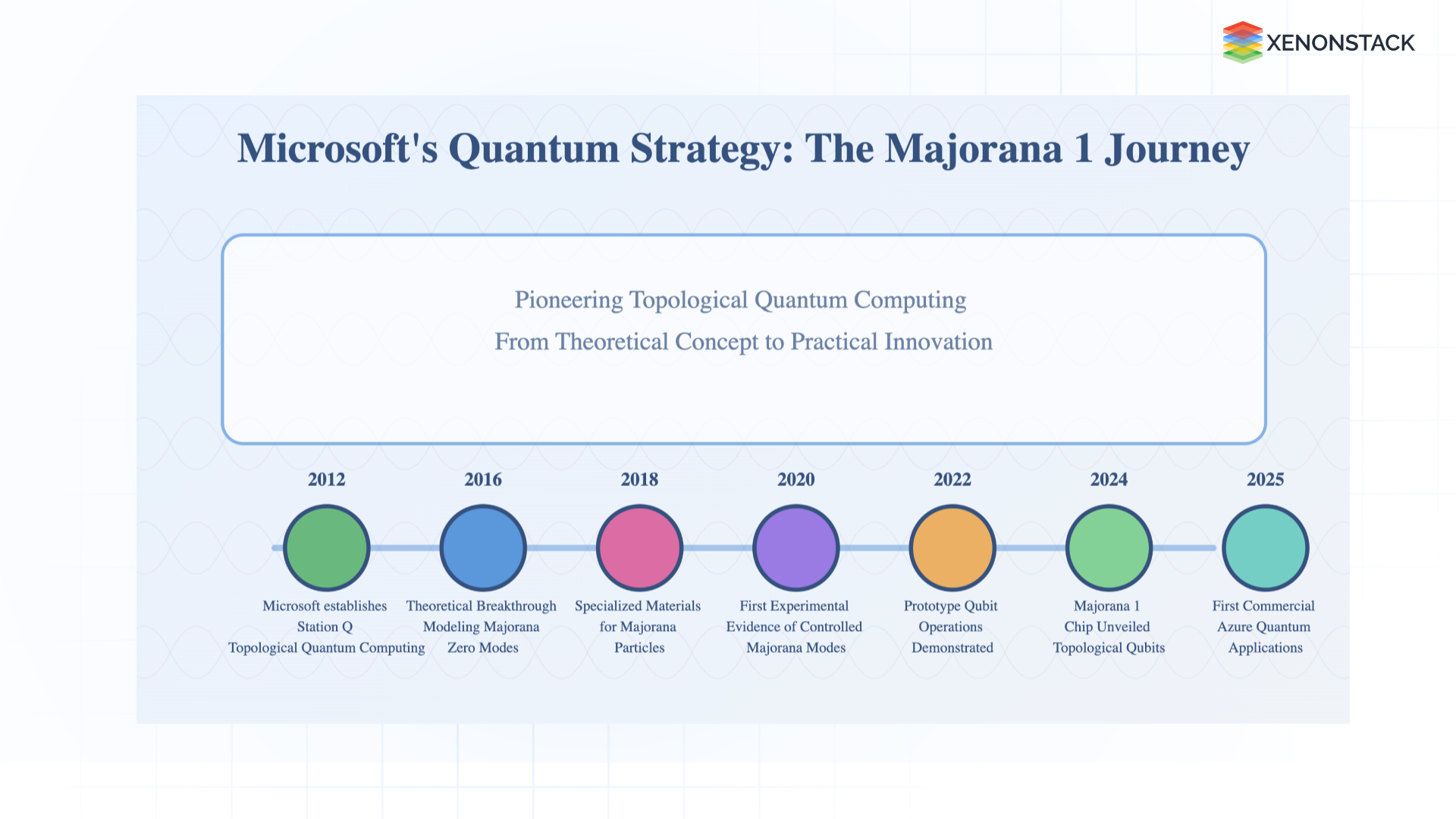
Microsoft's Quantum Strategy & Market Position
Microsoft's quantum strategy differs markedly from competitors'. While IBM and Google have been producing increasingly larger quantum processors (IBM recently announced a 1,121-qubit system), Microsoft delayed hardware announcements until they could demonstrate their topological approach. This patience reflects Microsoft's broader business philosophy under CEO Satya Nadella: focus on foundational technologies that scale to enterprise needs rather than chasing early headlines. The company's quantum investments align with its cloud-first strategy, positioning Azure Quantum as the eventual access point for this technology.
Majorana 1's Potential Industry Transformations
Microsoft's path to Majorana 1 represents one of the most ambitious research programs in computing history. When most quantum computing research focused on superconducting qubits, Microsoft made a bold bet on topological quantum computing, a theoretical approach first proposed in the early 2000s.
The journey required solving fundamental physics challenges.
Microsoft assembled a global research network including Station Q (Santa Barbara), QuArC (Redmond), and partnerships with Delft University of Technology, the University of Sydney, and Copenhagen University. These collaborations brought together theoretical physicists, materials scientists, and computer scientists in an unprecedented research effort.
Microsoft's Quantum Strategy: The Majorana 1 Journey
 Fig 1: Majorana 1 Journey
Fig 1: Majorana 1 Journey-
2012: Microsoft establishes Station Q to explore topological quantum computing
-
2016: Theoretical breakthrough in modelling Majorana zero modes
-
2018: Development of specialized materials to host Majorana particles
-
2020: First experimental evidence of controlled Majorana zero modes
-
2022: Prototype qubit operations demonstrated
-
2024: Majorana 1 chip unveiled with functional topological qubits
-
2025: First commercial applications running on Azure Quantum with Majorana architecture and release of expanded quantum development toolchain
For business leaders, this timeline demonstrates the challenges of quantum development and Microsoft's commitment to long-term research investments. It suggests that quantum computing requires patience and that breakthroughs can happen suddenly after years of foundational work.
Implementation & Accessibility
While quantum hardware dominates headlines, Microsoft's approach to making quantum computing accessible deserves equal attention. The company is building a complete quantum stack that connects the Majorana 1 hardware to practical applications:
-
Q# and Quantum Development Kit: Microsoft created a quantum-specific programming language and environment accessible to conventional software developers.
-
Quantum Intermediate Representation (QIR): An open-source interface that allows quantum programs to run across different hardware platforms.
-
For business audiences: This infrastructure means organizations can begin exploring quantum applications today using simulators and quantum-inspired algorithms, developing expertise that will transfer to topological quantum systems when they reach maturity.
-
For technical leaders: Microsoft's quantum stack emphasizes familiar development patterns, gradually allowing existing software teams to build quantum expertise. The architecture supports hybrid quantum-classical algorithms that deliver value even with limited qubit counts.
Future Outlook & Investment Considerations
The Majorana 1 represents an inflexion point in quantum computing development, but significant challenges remain before we see widespread commercial applications. Microsoft estimates that practical quantum advantage for significant problems will require systems with thousands of logical qubits—still years away, even with topological advantages.
Key milestones to watch for include:
-
Demonstration of quantum error correction with topological qubits
-
Achievement of quantum advantage for commercial applications
-
Integration of quantum processing units with conventional computing infrastructure
-
Development of industry-specific quantum algorithms and applications
For executives: While immediate investment in quantum hardware remains premature for most organizations, investment in quantum-ready talent and use-case exploration is timely. Companies should consider:
-
Establishing quantum centres of excellence
-
Partnering with quantum hardware and software providers
-
Identifying high-value computational problems that might benefit from quantum approaches
-
Developing quantum literacy among key technical staff
To delve deeper into Microsoft Azure, consider exploring the following blogs for more insights:
Conclusion: Beginning of the Quantum Era
Microsoft's Majorana 1 represents a company milestone and a significant moment in computing history. Topological quantum computing has become a physical reality, long considered a theoretical possibility. While practical, large-scale quantum computing remains years away, this achievement accelerates the timeline and validates Microsoft's patient approach.
What's clear is that quantum computing has moved beyond theoretical physics into the realm of engineering challenges. With Majorana 1, Microsoft demonstrates that even the most ambitious technological visions can become reality through sustained research commitment and cross-disciplinary collaboration.
The quantum future isn't quite here—but we can now see its outlines taking shape in Microsoft's revolutionary chip.



